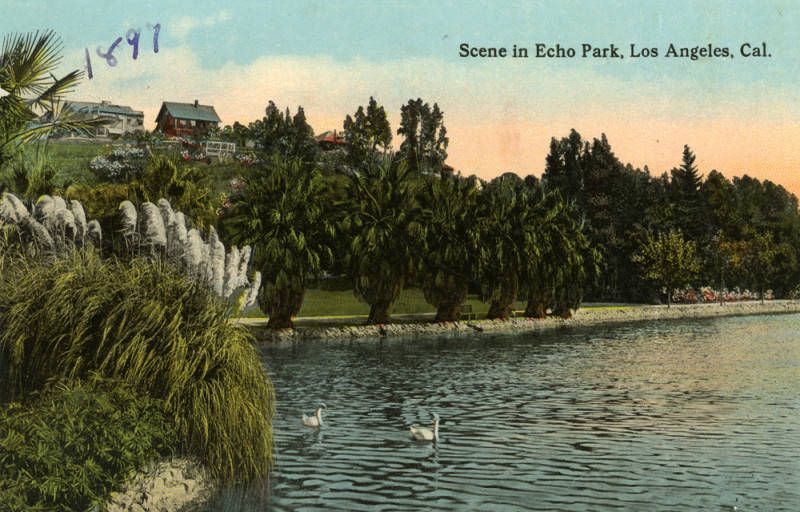
circa 1897 (Postcard image: Security Pacific National Bank Collection, LAPL)
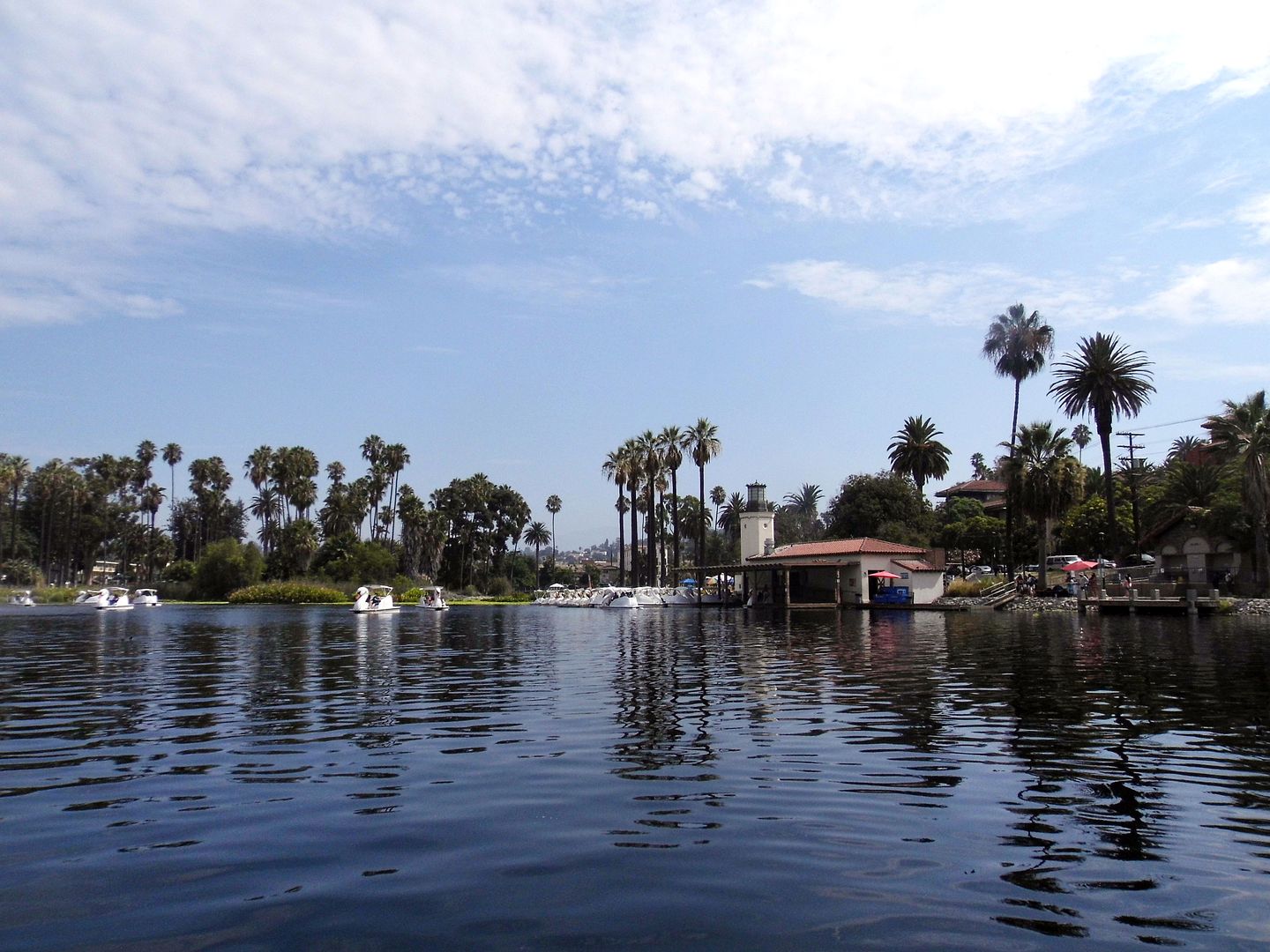
I've been aching to go boating on the lake ever since—but even though it reopened in 2013, I could never find someone to go with me and could never work up the courage to go on my own.
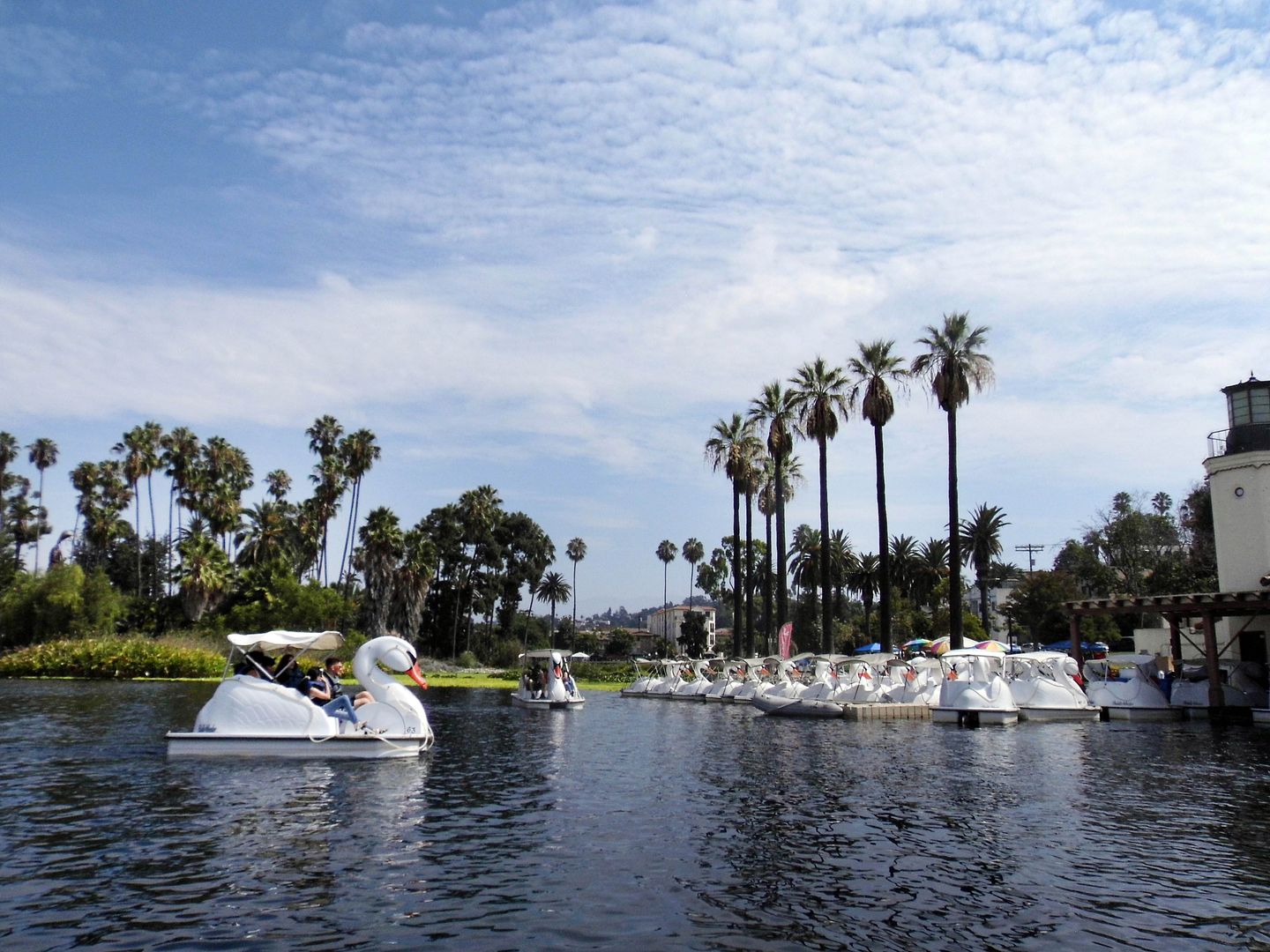
In that time, the historic boats and canoe of Echo Park Lake were relocated to the Redondo Beach Pier—and, in 2018, replaced with larger-than-life swans. Pedal boat swans, that is.
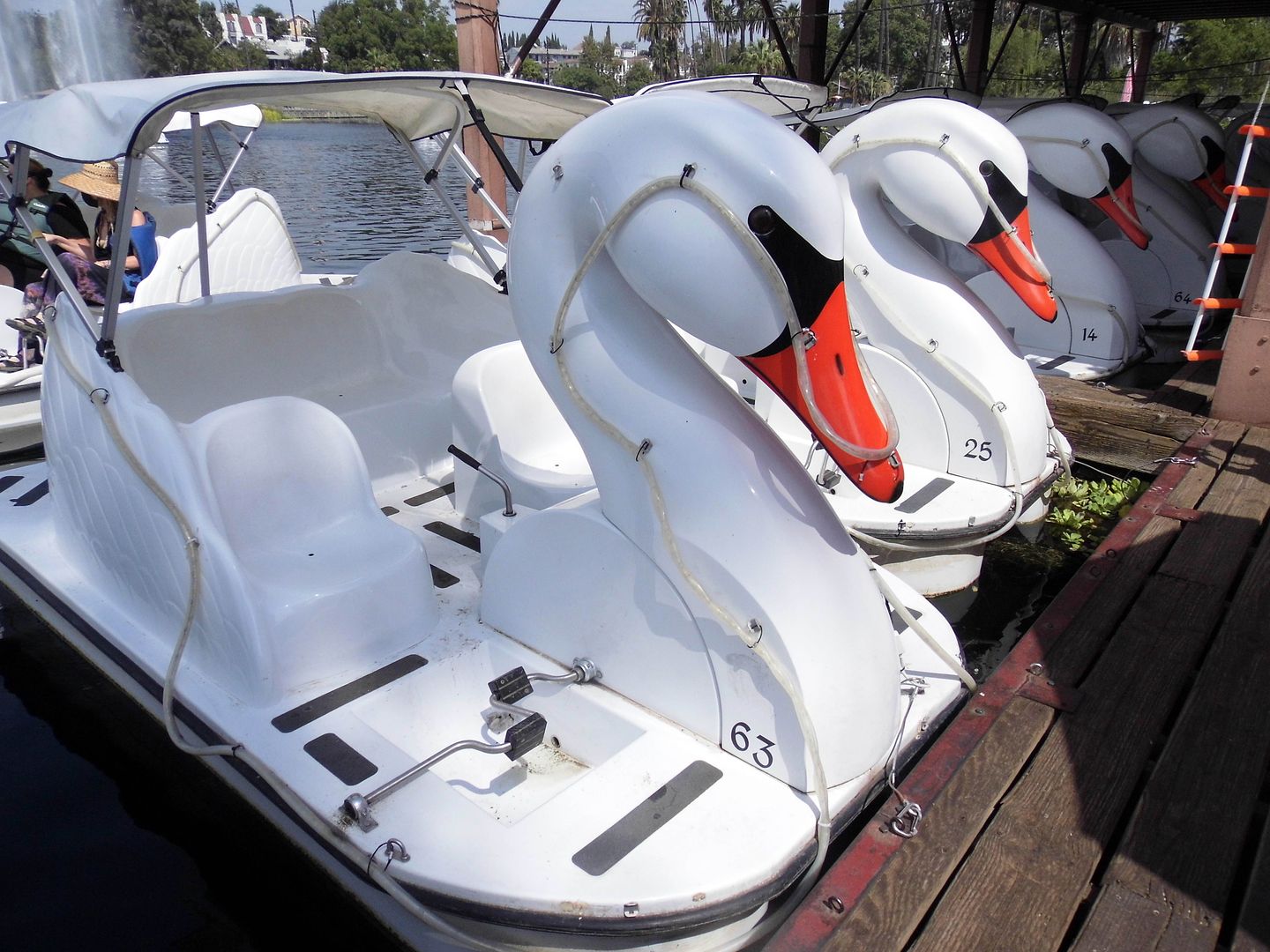
And this past weekend, I finally got my chance to walk the plank of the circa 1933 boathouse, embark on an oversized waterfowl, and get to pedaling.
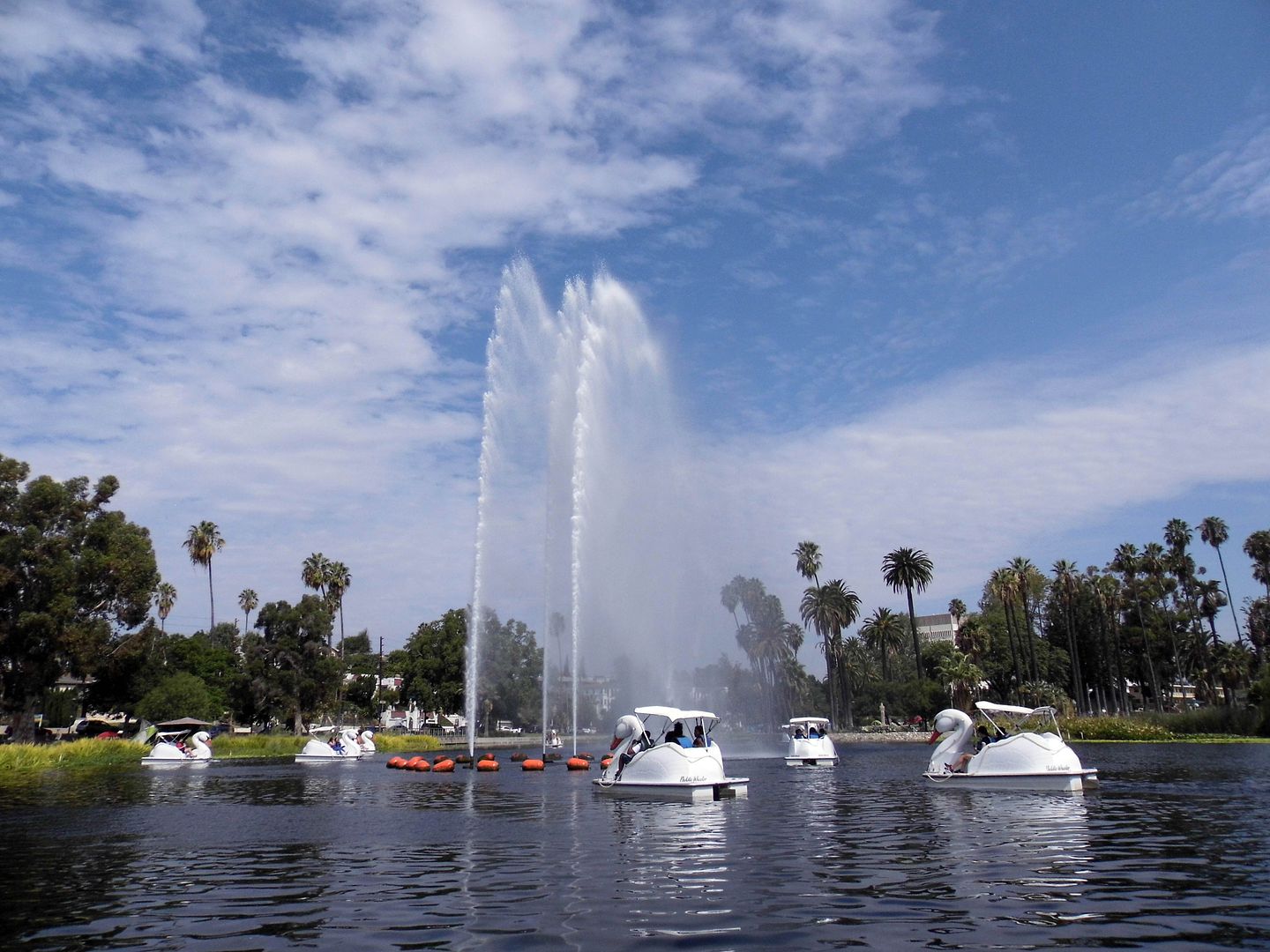
Of course, you don't really go anywhere on Echo Park Lake. That's kind of the point. You just enjoy the palm trees and the Downtown LA skyline while trying not to bump into any other boats.
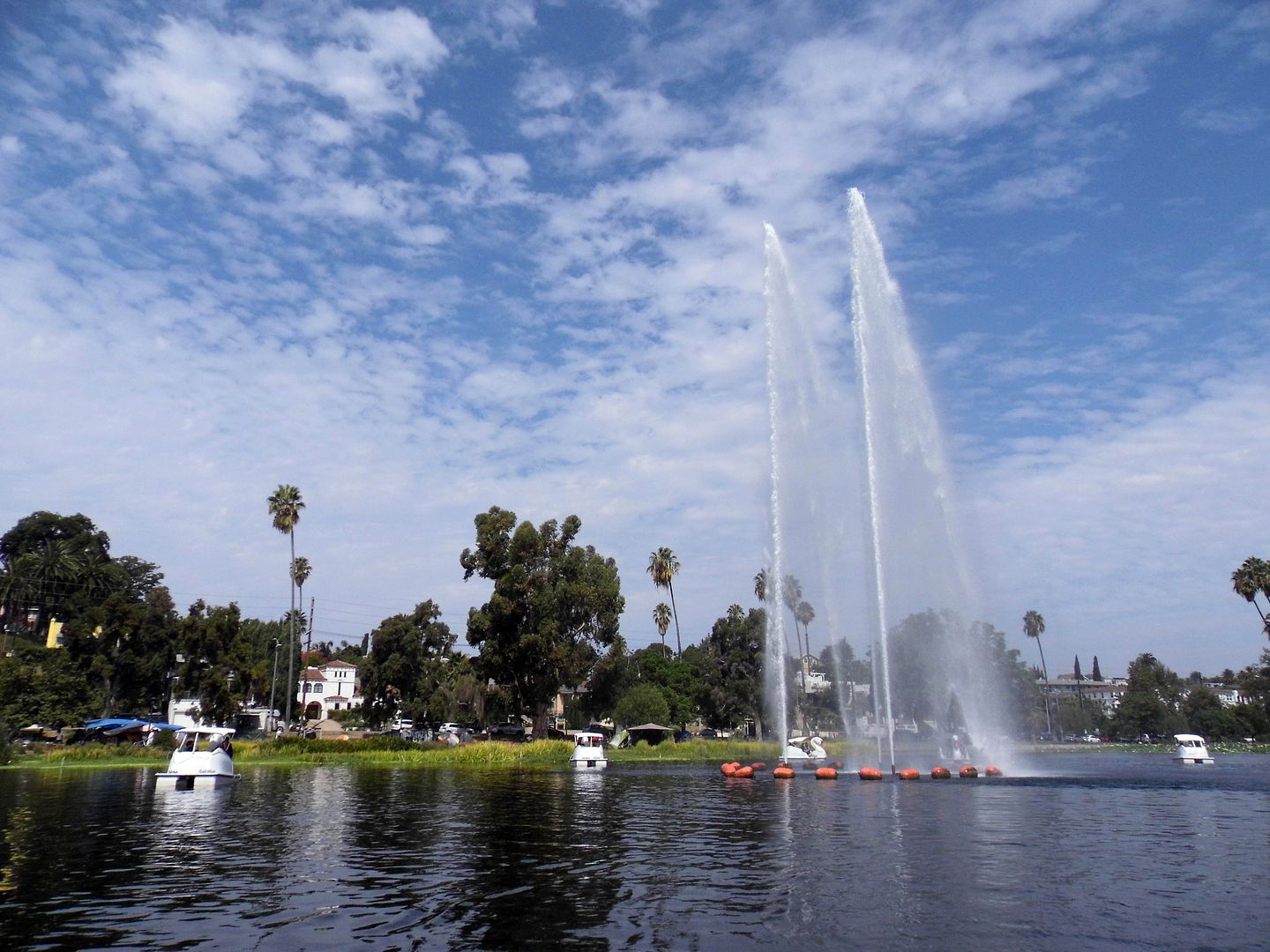
You can pedal forwards or backwards—or not at all, and just coast on top of the rippling surface.
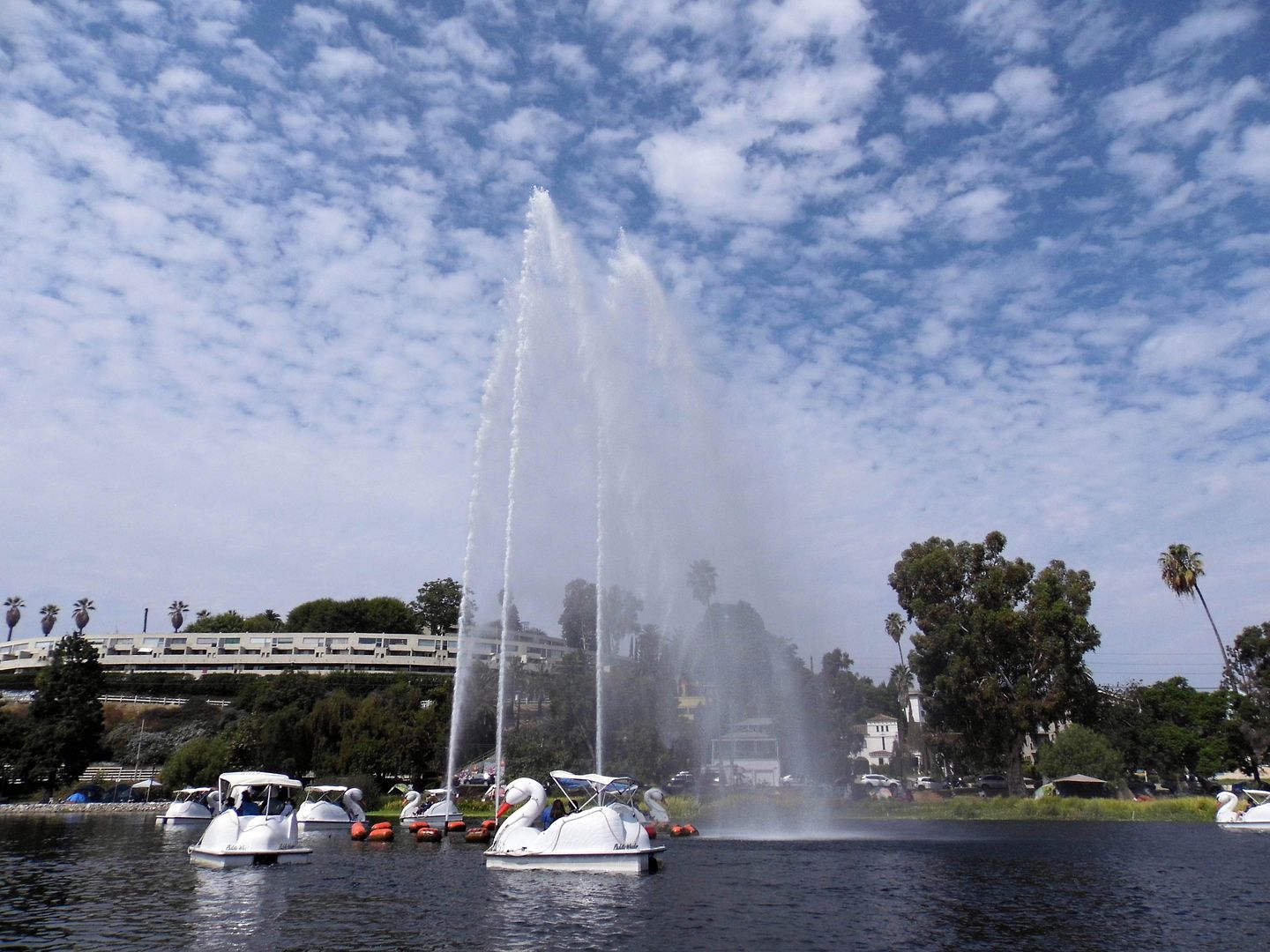
Maybe you'll even get spritzed by the central cascading fountain (installed around the 1984 Olympic Games improvements)—somewhat of a relief on a sunny Sunday morning during a heatwave.
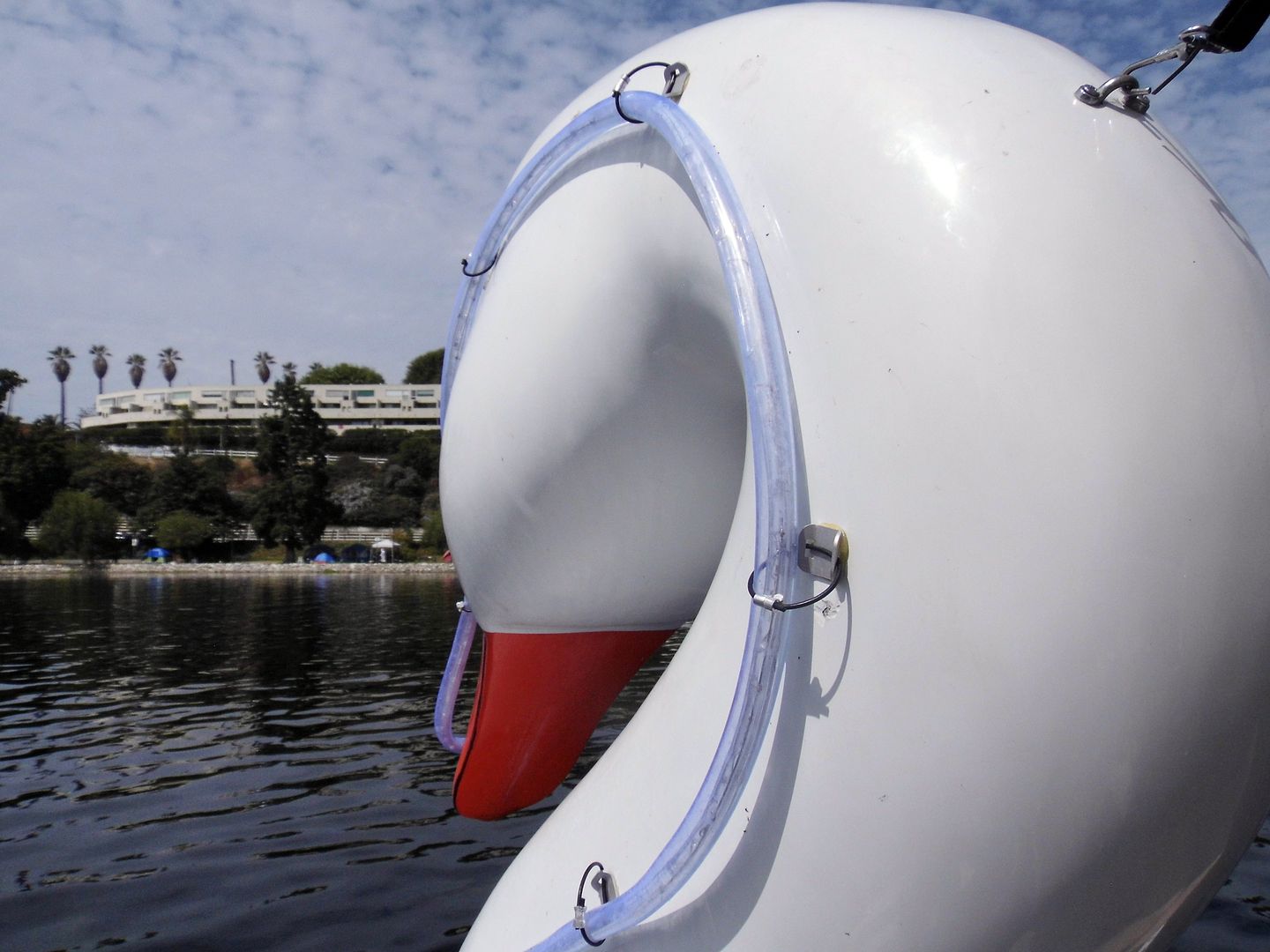
Fortunately, the canopied boats provide some shade—but the long-necked avian forms of these watercraft dominate much of the view.

Still, with a shift of the rudder, you can aim yourself towards "The Lady of the Lake"—a poured concrete, Art Deco-style statue that was created by Ada May Sharpless as part of the Works Progress Administration in 1935 (and mothballed between 1986 and 1999).
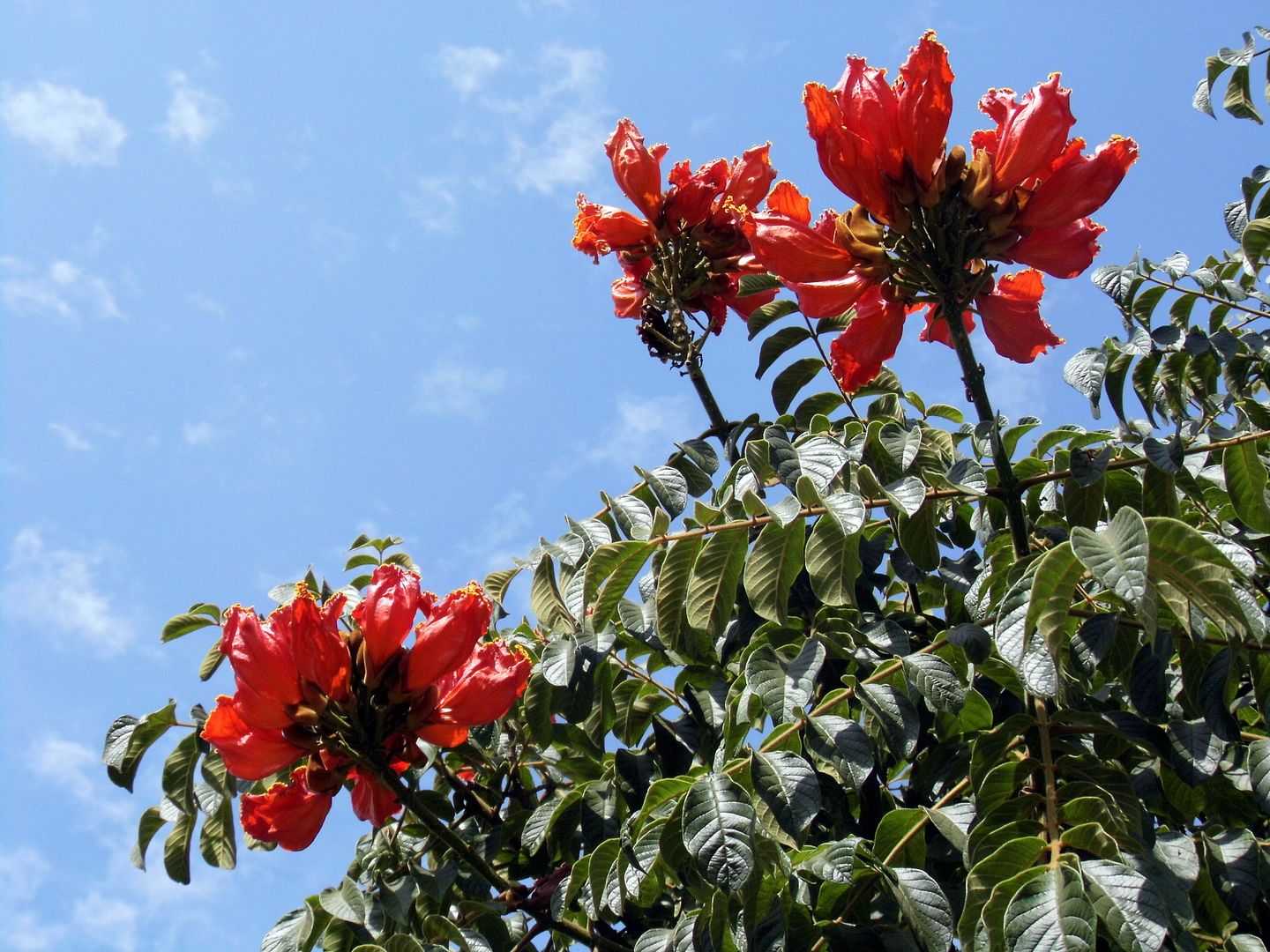
On dry land, a walk around the park that surrounds Echo Park Lake reveals flowering trees in red and yellow...
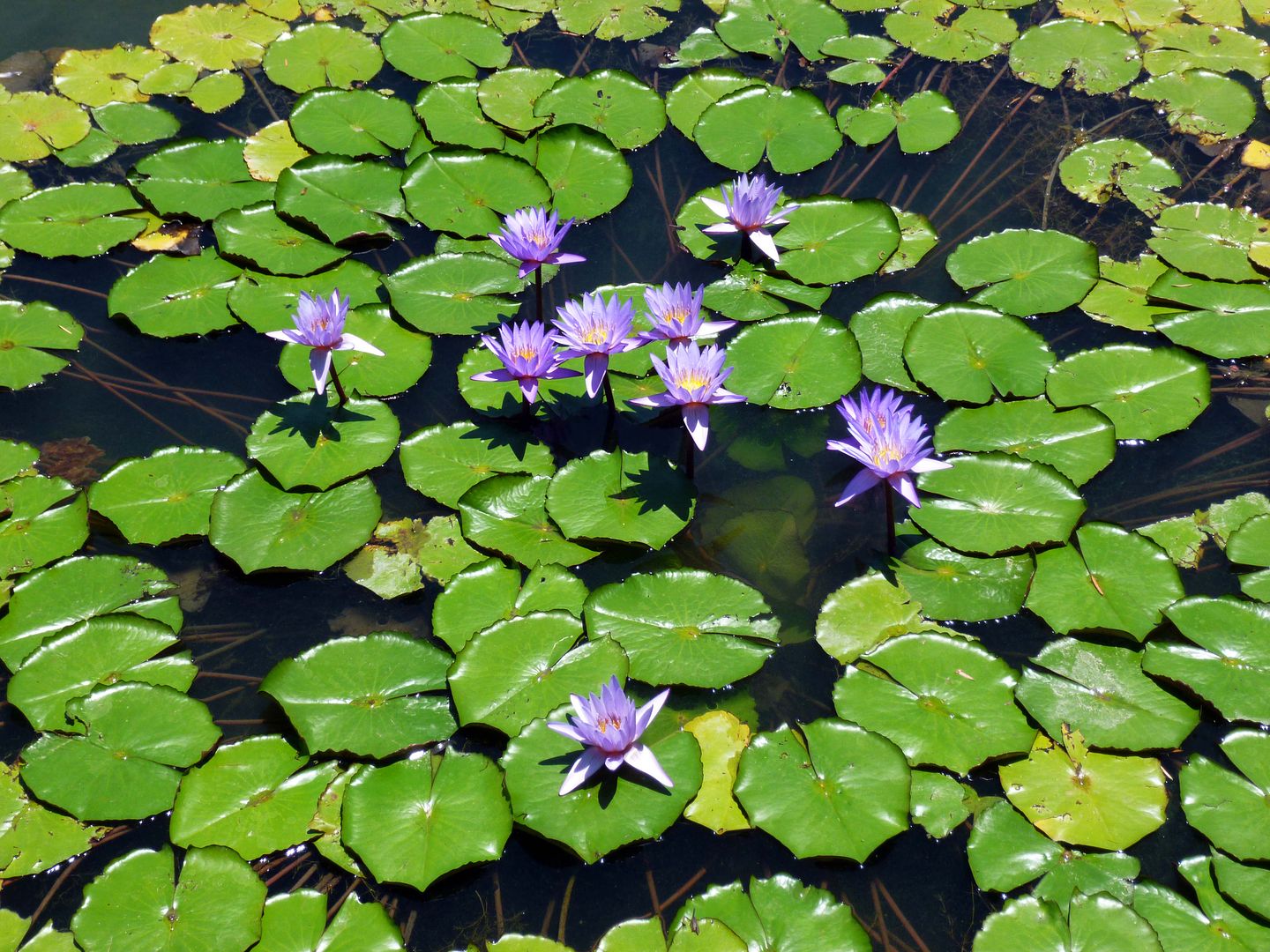
...but the real botanical attractions of the lake are the water lilies and lotuses, the latter being the namesake of an annual festival at the lake.

Since the 1970s, the Lotus Festival has usually occurred in July, when the lotuses are in bloom—except this year, which has left the 2-day celebration postponed indefinitely.
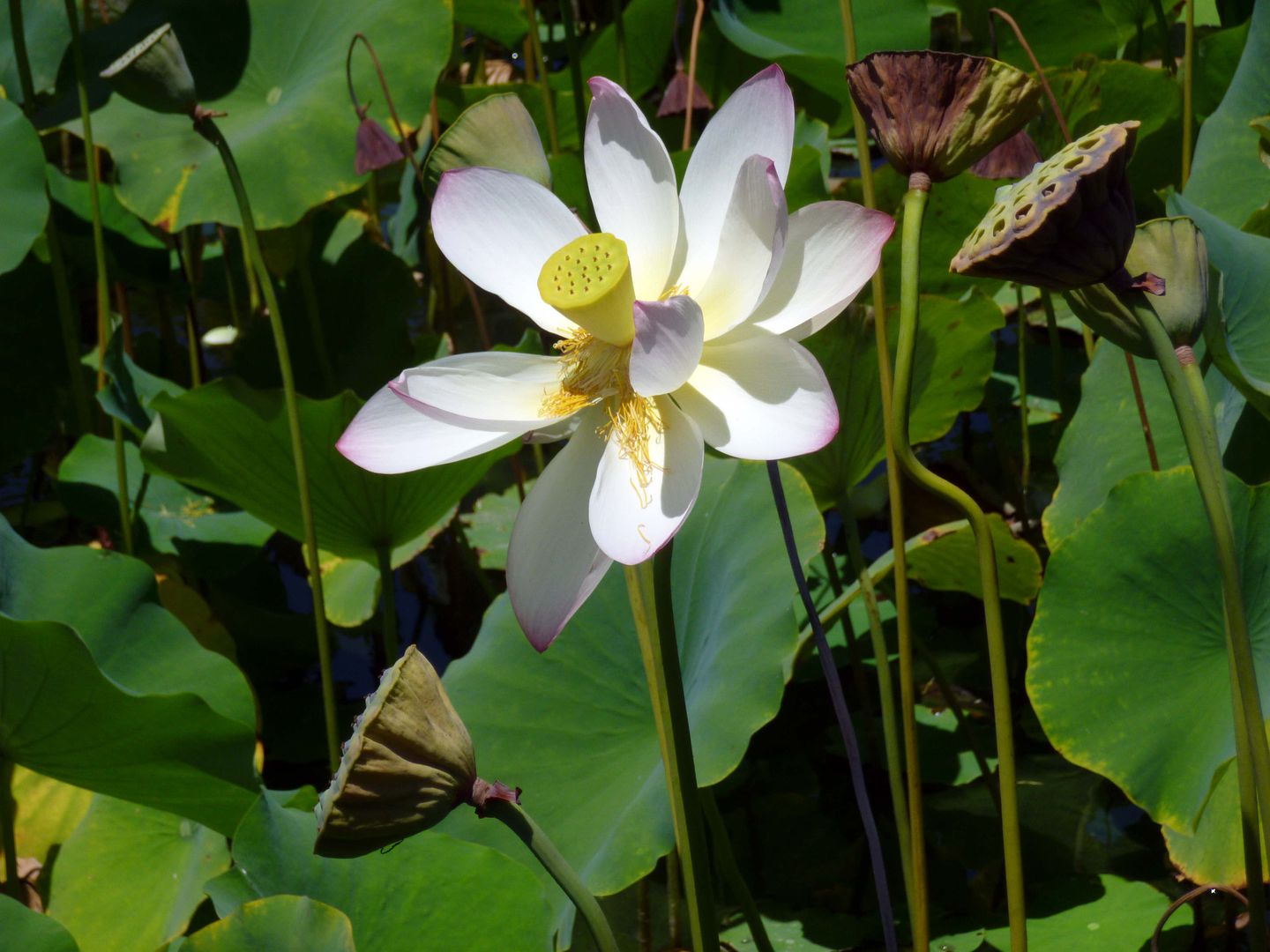
The lotuses aren't original to the creation of the lake—especially considering Los Angeles Canal and Reservoir Company constructed it in 1870 to hold drinking water.

But the type of lotuses associated with the lake today—the sacred lotus (Nelumbo nucifera), native to Asia—arrived sometime in the 1920s, shifting the focus of the English-style gardens decidedly eastward.

By in 2008, though, the lotuses had completely disappeared. They'd perished—maybe because of climate or pollution, or improper trimming, or being munched on by predators (like turtles and coots).
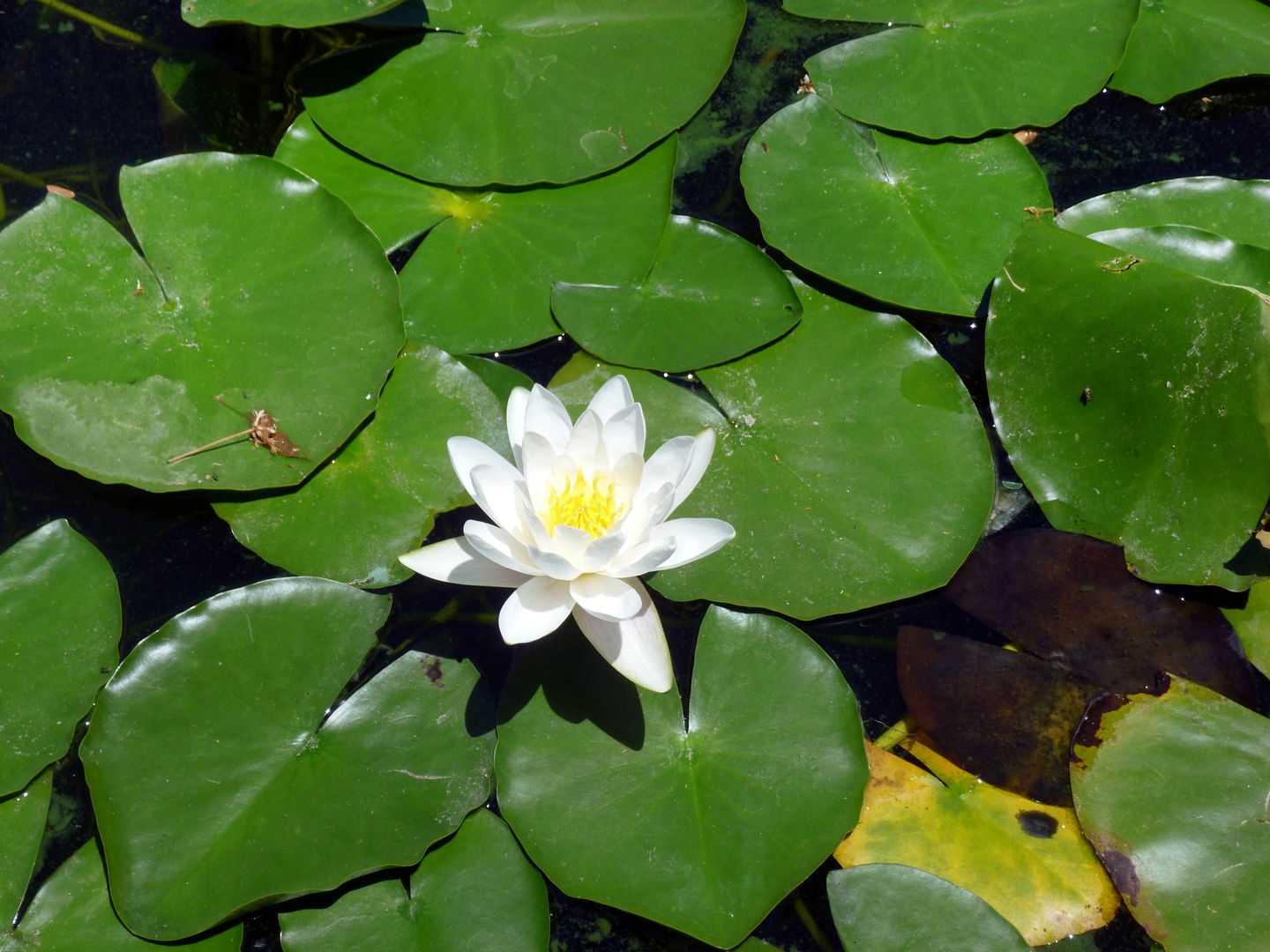
And when the lake renovation effort attempted to restore the aquatic plant population for its grand reopening, there was only one guy who could make that possible—the thief who'd hacked off some cuttings eight years prior, back in 2005.

At his aquatic nursery in the San Fernando Valley, the bandit—an intrepid horticulturalist—had gotten those cuttings to grow and proliferate.
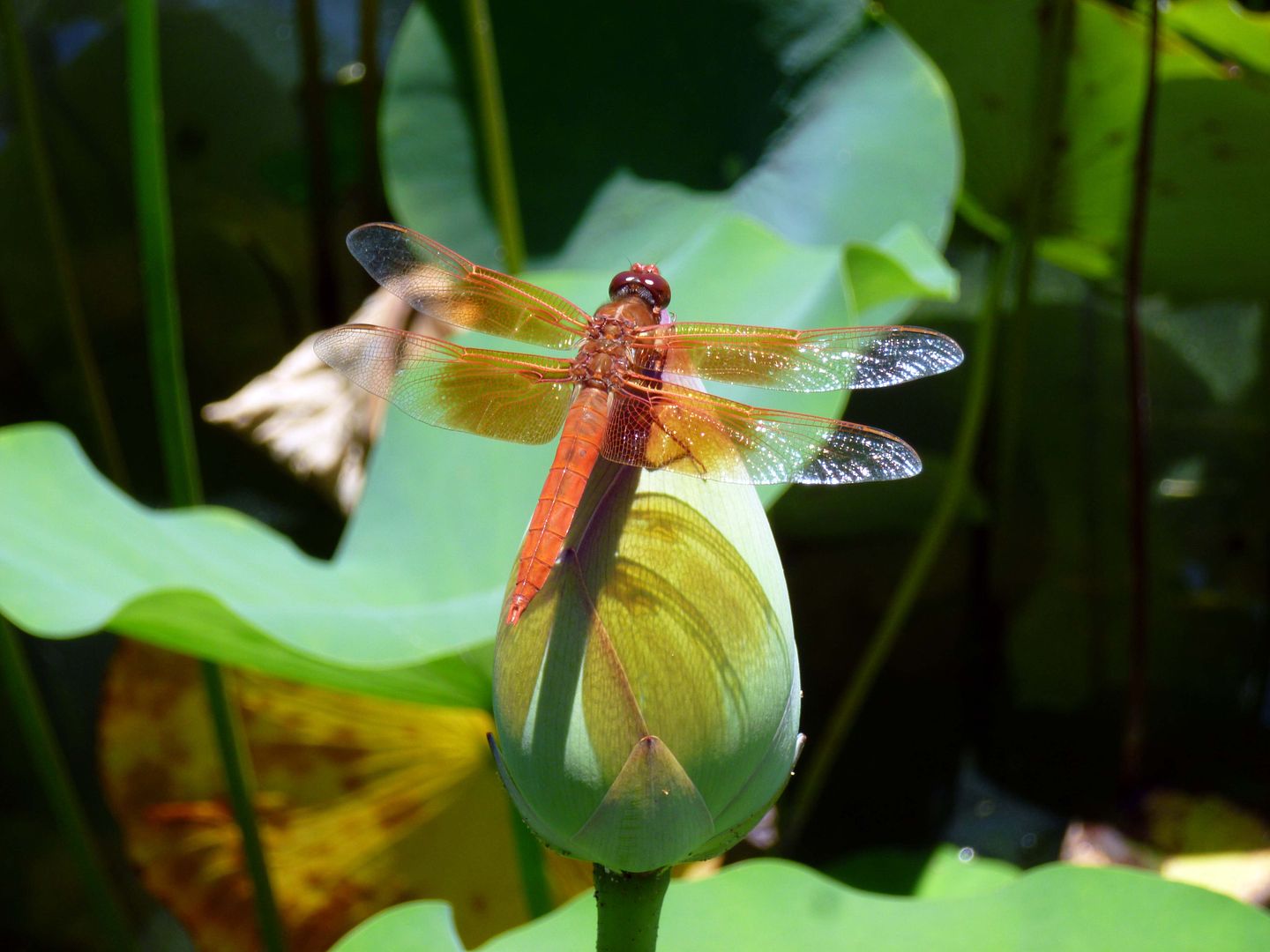
After confessing his crime, he managed to sell some of the resulting plants back to the City of Los Angeles for a hefty profit, despite their shady history as stolen goods.
In a way, his thievery makes the story of Echo Park Lake even better. It's very LA—or very Hollywood, at the very least.
People like to gossip about all the stuff they've found at the bottom of the lake each time it's been dredged over the course of its 150-year history—but I prefer seeing it filled with water, completely unaware of what may lie beneath the surface.
Related Posts:
Photo Essay: Hope for MacArthur Park

I suppose Echo Park Lake is technically manmade but it's worth noting that there was a body of water there already. Like most of our reservoirs, it was a wetland fed by streams and humans came along and augmented it by installing a dam, digging it a bit deeper, and entombing the streams that feed it in pipes lowered beneath streets. Arroyo de los Reyes flows mostly underneath Glendale Boulevard into the lotus area. The area with the island is fed by a stream that mostly flows underneath Echo Park Avenue.
ReplyDeleteAlso, a minor correction -- the Lotus Festival hasn't taken place every year since it was founded. I'm pretty sure it was cancelled in 2019. There was one year it took place in a nearby parking lot, too.
Lovely pictures in this entry, by the way -- especially the flowers.
Sorry, I meant the Lotus Festival was cancelled in 2009.
DeleteThe pictures are truly lovely. We have lived and walked in the park since 1975 and have seen it evolve into the most beautiful park in the city. Unfortunately, the last few years, because of the inability of our local government to find solutions for our homeless population, it is a place I no longer feel safe to walk. Hopefully, we will one day vote the idiots out of office who are now in charge and put in those who are action oriented and able to think out of the box. O'Farrell and Garcetti need to go!!!!!!!
ReplyDelete